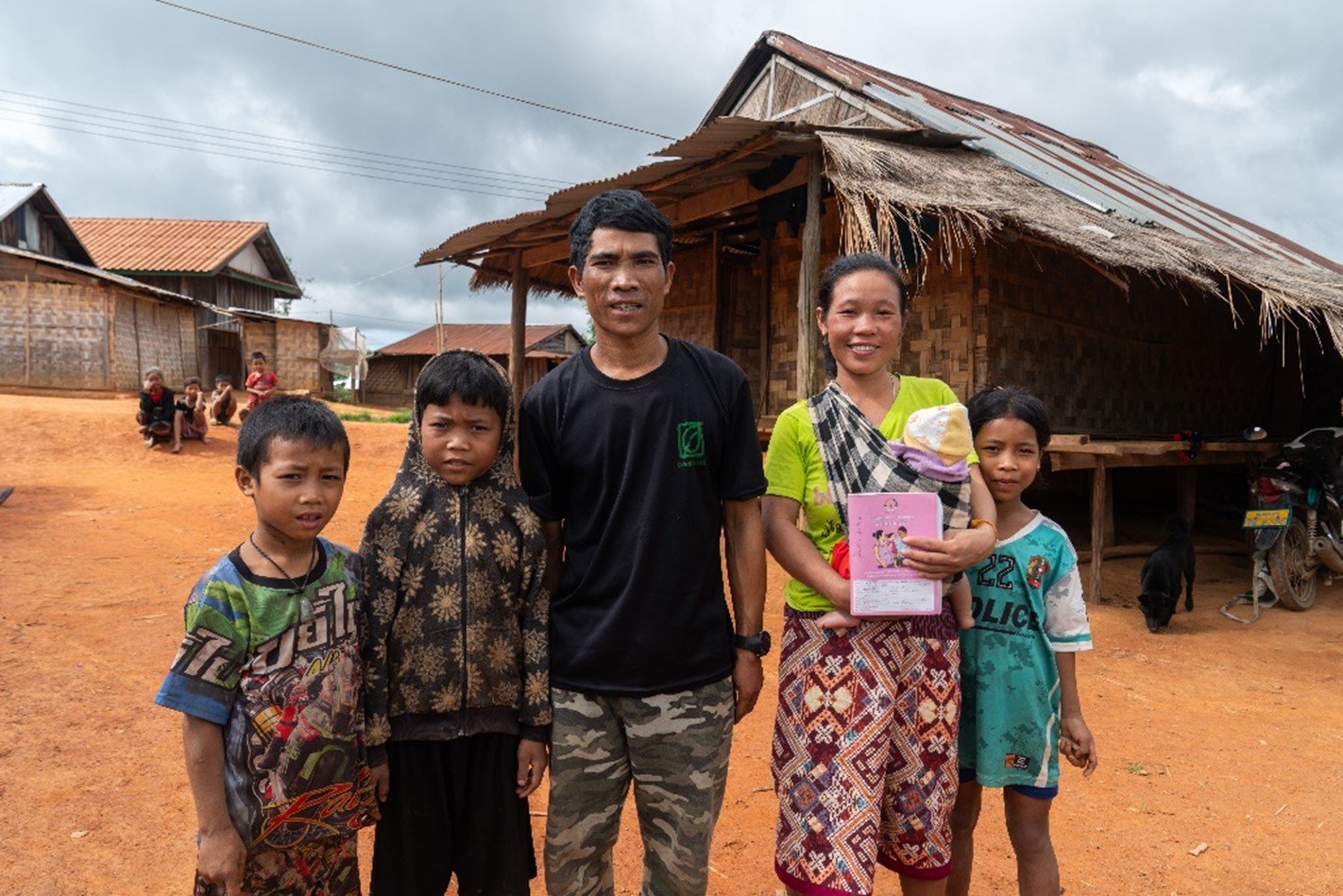
Kua, a mother of four in remote Sa Kuan Village, Luang Prabang Province and her husband Sivong, faced a significant risk to Kua’s health – and limited options due to finances.
Their home, Sa Kuan Village, sits in a beautiful but remote and mountainous part of Lao PDR, several hours from a major road and a more than one-and-a-half-hour drive across rugged terrain to the closest medical facility: Huay Khing Health Center. Giving birth at home again placed Kua at an increased risk of pregnancy complications with no access to medical support.
Travelling safely to the small health center late in her pregnancy would involve significant cost to her family, if sufficient time (and transport) was even available.
Fortunately, following the participation of local authorities and the Huay Khing Health Center team in CONNECT, a WHO-supported governance and community engagement strengthening initiative, Kua found an alternative.


“I remember when my wife was close to giving birth. The village leader lent us 700 000 LAK [about USD 35], to be repaid when we could, to cover costs. He also helped me to arrange transportation for a village health volunteer, and my wife and I to the hospital. This was my wife’s first-time giving birth at a health center.”
“Giving birth at the health center has been a positive experience for us. The centre provided a comfortable environment, excellent service, and great care from the health providers. We are very happy with the support we received. In the future, if we have more children, we plan for them to be born there.”
Kua and Sivong praised the health center staff, village health volunteers and village authorities for their support in ensuring a healthy birth and new members of the family.
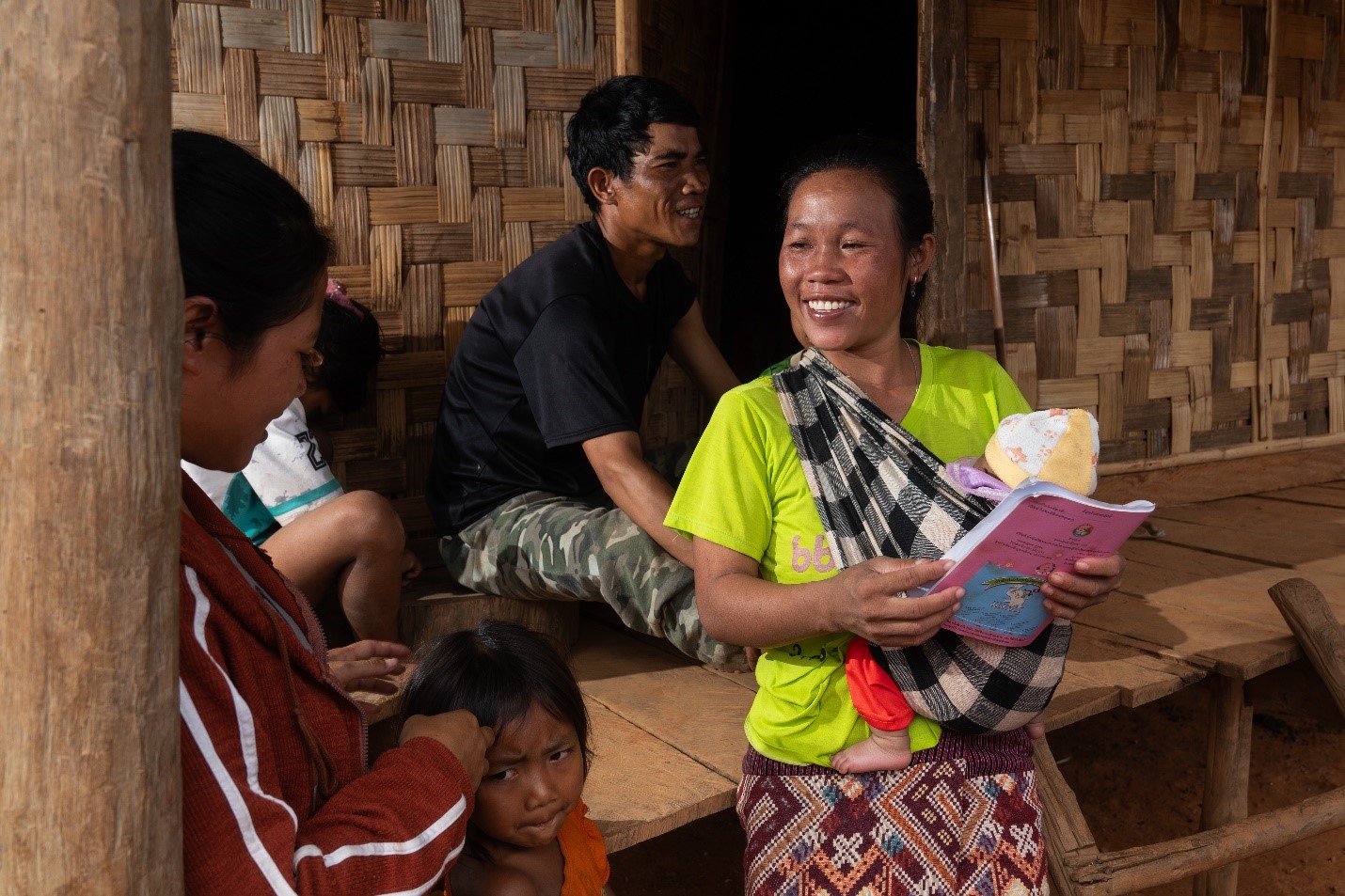

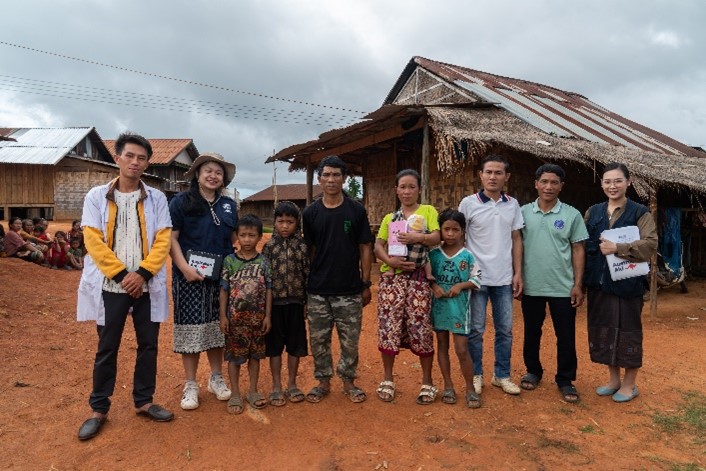
Positively, Kua is just one of many village residents benefiting from improved engagement by the health centre, and improved planning and coordination between the health sector and village authorities.
With a total population of close to 900, Sa Kuan Village’s residents are primarily from the Khmu ethnic minority (alongside a few Hmong families), generating income through agriculture and livestock.
While electricity has been available since 2023, due to the village’s remote location residents face significant challenges. Poor road conditions, particularly during the rainy season when the district’s majority dirt roads often become impassable, as well as limited clean water sources, and extremely weak telecommunications connectivity, all limit access to basic services.

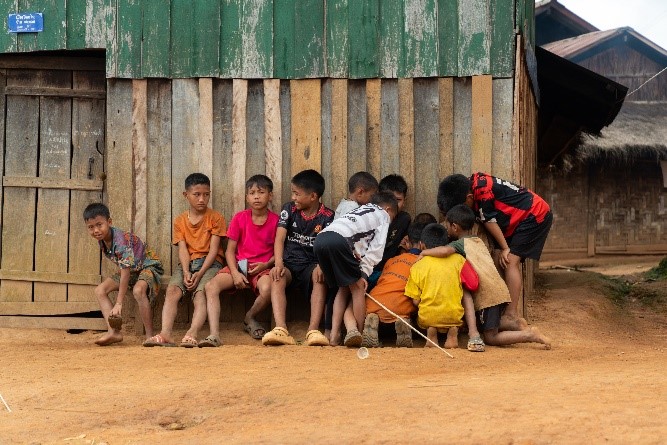
On this basis, the village was selected to participate in CONNECT. Developed by the Lao Ministry of Health and Ministry of Home Affairs in response to COVID-19, with the support of WHO, the Australian Government, USAID and other development partners, the CONNECT initiative enhances local governance and community engagement for equitable access to public services, particularly health.
Practically, one of its focuses is bringing together local health officials and local authorities, ethnic and religious leaders, representatives from the Lao Women’s Union and Lao Youth Union, and other community stakeholders, to improve planning, coordination and prioritization of health.
Supporting Sa Kuan Village, Dr Bounphaeng Namsengsong, a healthcare provider at the nearby-ish Huay Khing Health Center, has played a key role in increasing village authorities’ focus on health to address some of the long-standing issues faced in the community.
“In our village we face many health problems, including home births with risk of complications, low vacation rates, limited awareness of the need for antenatal care among new mothers, and barriers to accessing care at our health center" said Dr Namsengsong. “Additionally, the roads are poor and some villages are very far away, while some health providers are inexperienced when it comes to community engagement.”
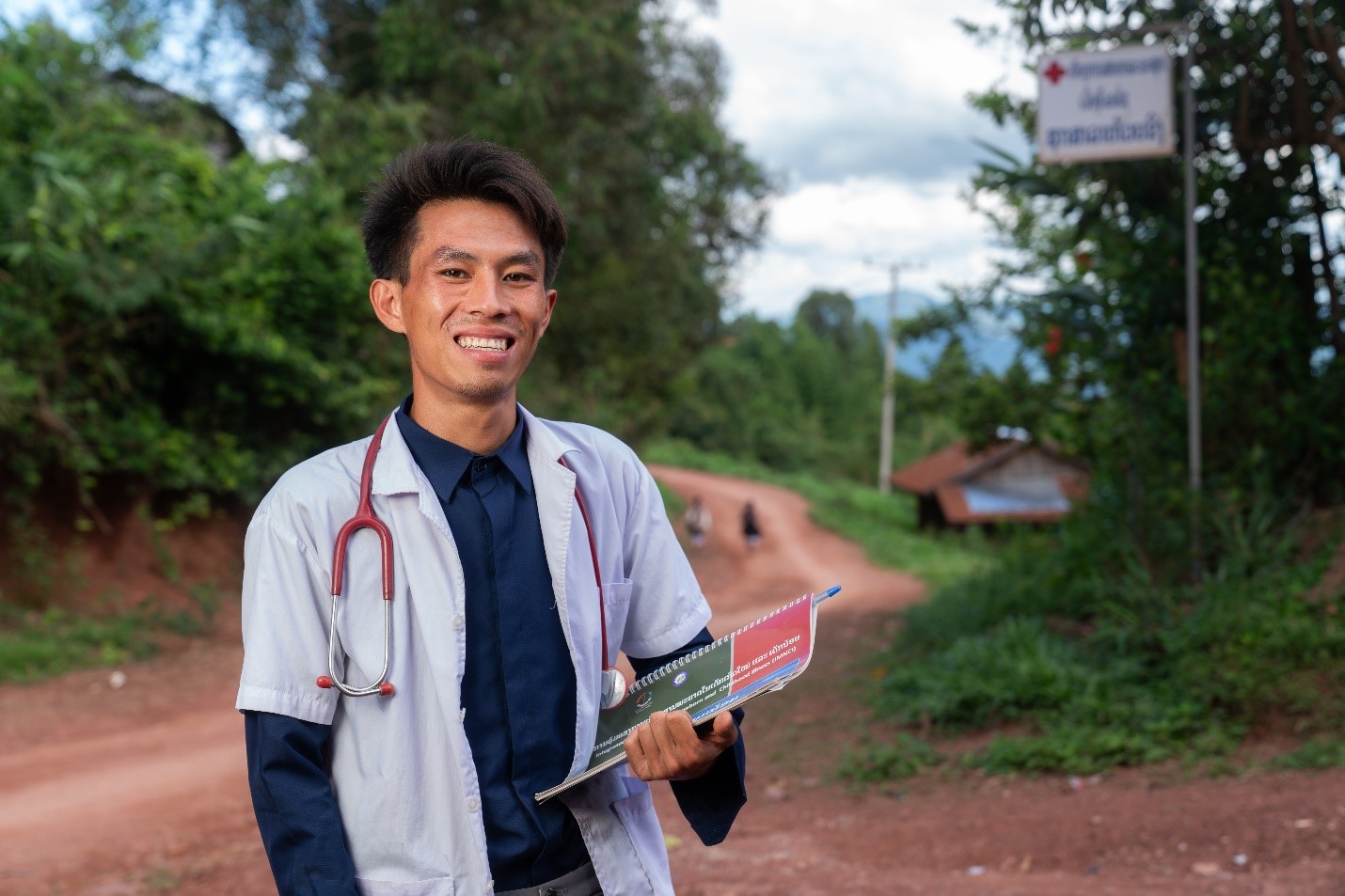

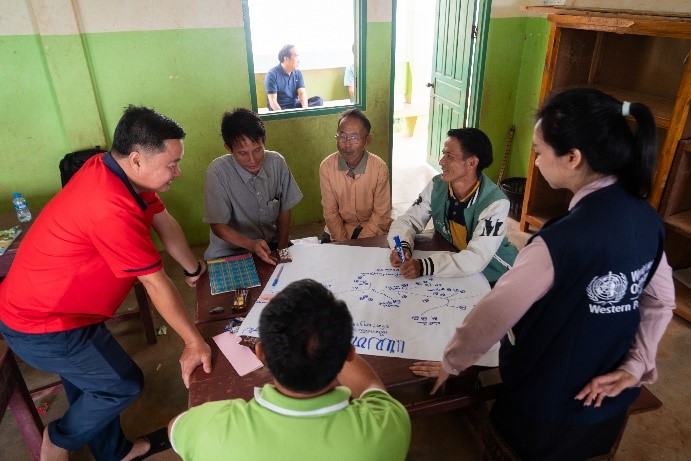
Supported by Australian Government assistance for CONNECT in Luang Prabang Province, Dr Namsengsong was able to implement the initiative in Sa Kuan and nearby Houaytho villages, before expanding to another four villages (Houaykhing, Phakbong, Houayha and Longlath) in the health centre’s area of responsibility. He says the results have been promising, with improved awareness of health and increased community involvement.
“With support of the health centre and nai ban [elected village chief], Sa Kuan Village is a clear example of the power of bringing together local governance structures and leaders, to address health issues specifically, and increasing the attention on health,” says Dr Namsengsong.
“In Sa Kuan Village in particular, after reviewing barriers to health in the community as part of CONNECT workshops, local authorities took this collaboration a step further, looking at what more they could do – they then established a village fund to increase support for mothers and children specifically.”
Beyond the village fund, local authorities and the health center have been making efforts to increase communication and engagement with the community more traditionally, using village loudspeakers to share health advice, particularly for expectant mothers, as well as vaccination reminders.
These increased announcements originally caught the attention of Sivong and his wife, alerting them to the increased support available.
“I remember hearing our village head on the megaphone, promoting health services, the importance of giving birth in the health centre, and vaccination,” he says, “they also informed us financial aid would be available to those in need to go to the health centre to give birth, and the need for pregnant women"
Hironori Okabayashi, the WHO technical officer responsible for supporting the CONNECT initiative, says Sa Kuan Village is an excellent example of the benefits of taking health beyond the health sector, increasing ownership of local health issues, and changing the ways community members are engaged with.
“We are seeing improvements at both ‘sides’ of health service delivery,” says Hironori, “local authorities are now regularly reporting the status of children in target vaccination groups, to allow the health centre to better follow-up. For example, if a woman gives birth while working on a farm, the nai ban now reports to the health centre, to ensure the medical staff can administer initial vaccination.”
Similarly, the style of communication has changed. Previously, local authorities used compulsory measures – such as formal letters – to inform and encourage the population to utilize primary healthcare services. After the deployment of CONNECT, the focus has shifted to health education, awareness-building and active engagement with communities to change their health seeking behavior, leading to an increase in vaccination, especially BCG, births at the health center, as well as the number of mothers from Sa Kuan Village attending antenatal care sessions increasing from 7-8 per year to 15-16 per year.
Sa Kuan Village is one of more than 85 being assisted by the CONNECT initiative across Xieng Khouang, Xaysomboun, Bolikhamxay and Vientiane Province with support from the Australian Government, addressing vaccination, maternal and child health, and other issues, either introducing CONNECT for the first time, or conducting follow-up support visits.
“Sa Kuan Village's story is one of empowerment and possibilities for maternal and child well-being. The collaborative approach underscores a commitment to ensuring that all expectant mothers, regardless of economic status, have the necessary support to access primary healthcare” said Ms Benita Sommerville, Deputy Head of Mission, Australian Embassy in Laos.
“Sa Kuan Village's story highlights the power of collaboration in achieving positive outcomes for maternal and child health. Through a collective effort, the village prioritises ensuring that all expectant mothers, irrespective of their economic background, have access to essential primary healthcare services. This commitment paves the way for a brighter future for both mothers and their children.” Ms Benita Sommerville added.
More broadly, in a recent 3 161-response survey across 12 CONNECT-supported villages in Khammouan, Bokeo, Champasack and Xaysomboun Provinces, several short-term impacts were identified – including a marked increase in trust in local health centres from just over one-third (38%) to over half (53%). Among 144 recently pregnant women, the research found a 14% increase in giving birth at health centres. Additionally, among 67 pregnant women, intention to give birth at a health centre increased from 49% to 92%, following CONNECT implementation.
Currently supported by USAID, the Australian Government and Luxembourg, as of July 2024, CONNECT has reached more than 230 villages across 10 provinces (including Vientiane Capital), with a target of 14 provinces by the end of 2024, and support already in-place for expansion to all provinces.
CONNECT (Community Network Engagement for Essential Healthcare and COVID-19 Responses through Trust) is a joint Ministry of Health and Ministry of Home Affairs-led initiative supported by the World Health Organisation (WHO), with assistance from Australia, USAID, and the Government of Luxembourg. The initiative works to build trust between communities and healthcare providers, empower communities and local leaders to strengthen governance, planning, and coordination to reduce maternal and neonatal mortality, increase vaccination rates, and improve overall health outcomes.
